11.0
SPECIAL MOVEMENT
1e
Feudal Cavalry, by Games Workshop
11.0
SPECIAL MOVEMENT
1e
Feudal Cavalry, by Games Workshop
| A. CAVALRY && CHARIOTS | 11.1 Definition of Terms | 11.2 Rating Cavalry | 11.3 Rating Chariots | 11.4 Cavalry and Chariot Charges |
| 11.5 Cavalry and Chariots in Melee Combat | - | - | - | - |
| B. SPECIAL FORMATIONS | 11.6 Shield Wall | 11.7 Set Spears/Pikes | - | - |
| C. TERRAIN EFFECTS | 11.8 Terrain Effects on Movement | 11.9 Terrain Effects on Combat | ||
| - | - | Battlesystem | - | - |
Special movement in the Intermediate
Game includes
cavalry, chariots, shield walls, set spears
and pikes, and
terrain effects on movement.
Cavalry are human,
demi-human, or
humanoid creatures riding faster, larger
creatures into battle.
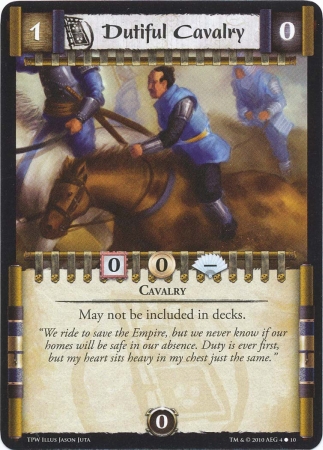
The riders are the
primary fighters, and the mounts serve
first as transportation and second as
fighters. Cavalry mounts incl. horses,
wargs, giant boars, elephants,
mammoths,
dinosaurs, any any creature
that can be mounted and ridden into
battle. Flying creatures with riders
([15.0]) are considered to be cavalry.
Chariots are vehicles pulled by
one or
more creatures that carry one or more
human, demi-human, or humanoid
passengers. The passengers are the
primary fighters, and the creatures
pulling the chariot serve first as
transportation and second as fighters.
Each cavalry or chariot figure fights as
a whole. If either the rider or the steed
is
killed, the entire figure is considered
unable to FIGHT, and is removed.
EXAMPLE: A unit of drow
elves is
riding nightmares. The unit is hit with
a
spell that kills the nightmares, but does
not affect the drow because the drow
have MR. Although the drow
survived the attack, the cavalry
unit is removed because the steeds were
all killed. Think twice before mounting
kobolds on dragons!
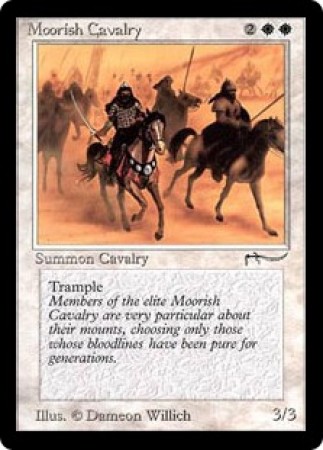
The AR, HD, AC, MV, and Dmg of
cavalry are determined in the following
manner.
AR: Rider's AR.
HD: Avg. of the rider's
HD and the mounts HD; round up.
AC: The poorer AC of
the rider or the mount.
MV: Mount's MV.
Dmg: Add the damage
done by mount and rider.
SA, SD: Special abilities
possessed by either rider or steed can be used. Special defenses apply
only if they apply to both rider && steed.
The AR, HD, AC, MV and Dmg of
chariots are determined in the following
manner.
AR: Avg. of all passengers
and
creatures pulling the
chariot,
rounded in favor of
the chariot.
HD: Avg. HD of all creatures
pulling the chariot
plus avg. HD
of all passengers.
AC: Avg. AC of passengers
and
pulling creatures,
plus bonus of -2.
MV: 2/3 of the MV of
the creatures
pulling the chariot.
EXCEPTION: If the creatures
pulling
the chariot have 3
or more times
the total HD of the
riders, the full
movement rate of the
pulling
creatures is used.
Dmg: Add the damage
done by all
creatures pulling the
chariot and all
passengers.
SA, SD: Special abilities
possessed by
either riders or steeds
can be used.
Special defenses apply
only if they
apply to all creatures
forming the chariot.
[11.4] CAVALRY AND CHARIOT CHARGES

Charging cavalry or chariots receive a
bonus of -2 to AR for that Game Round
unless the defending unit is in Set
Spears/Pikes formation. This includes
"break-though" attacks (see [7.14]
CHARGE.)
Weapons that do double damage in a
charge also do double damage in a
cavalry or chariot charge.
[11.5] CAVALRY AND CHARIOTS IN MELEE COMBAT
Only one attack roll is made for an
attack by cavalry or chariots. When
adding together the damage done by
riders, passengers, mounts, and creatures
pulling the chariot, use the same die
roll
to determine the number of HD of
damage caused.
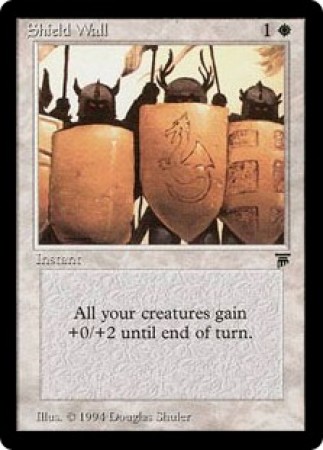
A unit that is in command and in
closed formation at the beginning of the
unit's Movement Phase,
and that is
equipped with large shields, can declare
a
Shield Wall before the unit moves.
A Shield Wall gives the unit a bonus of
4
to AC against all normal missile attacks,
and a bonus of 2 to AC against melee
attacks. It only gives the bonus for
attacks that hit the front of the unit;
it
gives no advantage to attacks from the
flank and rear of the unit, or from
above. It gives no bonus to AC against
artillery.
A unit in shield wall formation can be
placed so that it is in a circular or
square
shape with the shields facing outward.
In
this case, the unit has no flank or rear
sides, and the bonuses to AC apply to
attacks coming from any direction.
However, a unit in this formation cannot
move. Note that to enter a 4-sided
formation, some figures must have
enough movement to turn and face the
rear of the unit.
If the shield wall only protects the
front of the unit, the unit can move up
to
1/2 its normal movement rate. The unit
can change facing only up to 90 degrees
during any one Game Round. A change
of facing costs a unit in shield wall
formation its entire movement rate.
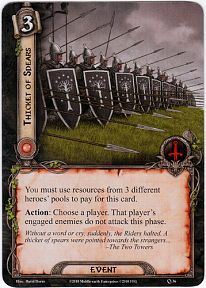
A unit that is in command and in
closed formation at the beginning of the
unit's Movement Phase,
and that is
equipped with spears or pikes, can
declare a Set Spears/Pikes before the
unit
moves.
A Set Spears/Pikes formation does
double damage to any enemy unit that
charges the formation. In this formation,
enemy losses are removed immed.,
before the enemy unit gets its return
attack (only the surviving figures may
attack). If the enemy unit is in closed
formation, however, it can fill in any
losses in the front line from the rear
ranks before making its attack.
Entering a set spears/pikes formation
costs 1/2 of a unit's movement rate. The
formation can be set to defend any and
all sides of a unit. However, if a 4-sided
formation is used, some figures must
have enough remaining movement to
TURN and face the rear of the unit.
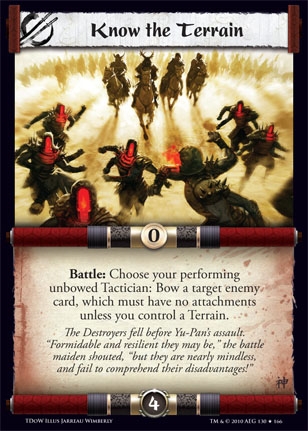
[11.8] TERRAIN EFFECTS ON MOVEMENT.
Table 14. Terrain Effects on Movement.
CLEAR TERRAIN: Full normal
movement.
ROAD: Bonus of 1/3 to normal
movement. To USE a road, the entire
unit must be on the road, and the unit
must stay on the road for the entire
move.
WOODS: Penalty of 1/3 to normal
movement. Woodland creatures
(elves, halflings, treants,
sylphs, etc.)
ignore this penalty. No unit can ever
be in closed formation in the woods.
Q: How do you determine
if a unit is completely in or just at the edge of a woods?
Is the entire unit considered
to be at the edge if just one figure touches the edge?
A: Only the status
of individual figures
matters when a unit is in
or near a woods.
A figure is at the edge
of a woods if any
portion of the figure touches
the edge.
Otherwise, the figure is
either completely
in or completely out of
the woods. Thus, a
unit could be half-in and
half-out of a
forest, with some figures
on the edge.
(127.14)
Q: Do woods effect melee?
A: No, but they do
prevent units from
charging.
(127.67)
Q: Can missile fire
occur in woods if
both the target and the
attackers are
within the woods?
A: No. The tree trunks,
leaves, branches,
etc., get in the way.
(127.67)
Q: How far can an
elf or other woodland
creature see in woods?
A: Page 21 of the
rules says that elves and
other woodland creatures
can see and cast
spells up to 6" away. Other
creatures are
limited to 1".
(127.67)
OBSTACLES (streams, walls, fences,
gulleys, etc.): Penalty of 1/3 to normal
movement, no charge possible
through obstacles. A unit in closed
formation goes immed. to open
formation when crossing an obstacle,
but there is no movement penalty for
this change of formation.
Q: When a unit encounters
a wall or
barrier, must it cross the
obstacle at
a right angle, or can it
cross at any
angle?
A: An obstacle can
be crossed at any angle.
The unit crossing the obstacle
pays the
movement penalty and must
go to open
order, no matter what angle
is adopted
when crossing the obstacle.
(127.14)
Q: The rules give
movement penalties
for crossing walls and other
obstacles.
Is it possible for a unit
to move
along the top of a wall?
What are the
movement penalties for doing
so?
A: A figure or unit
can move along any
terrain feature that has
space to hold it
and strength to support
it. The penalties
for such movement vary from
case to
case. Decide if such movement
is possible
and what the penalties are
before the
game.
(127.66)
Q: Can creatures such
as elves or
treants charge in the woods?
A: Only figures representing
single creatures
or characters may charge
in or into
the woods.
(132.34)
Q: Will flying over
a woods negate
the sighting penalties as
described
on page
21 of the rule book?
A: Probably not. A
flying creature not in
woodlands can sight and
cast spells in a 1?
radius centered directly
below the figure.
Elves and other woodland
creatures can
sight and cast spells within
a 6? radius. A
woods made up of leafless
trees or conifers
might be more transparent
to aerial
viewing; this should be
decided before the
game starts.
(132.34)
Q: How fast will a forest burn?
A:
Assuming the the trees are very dry and
the
wind is calm, a fire started by a single
figure
stand begins as a ½?-diameter
circle
and expands ½? per turn until
extinguished.
If there is a light wind, the
fire
starts as a rectangle ½? wide and 1?
long,
aligned with the wind. Each turn
thereafter,
the fire spreads 1? downwind
and
½" to either side. If the wind is
strong,
the windward expansion is 2? per
turn.
Forest fires can spread much more
slowly
or quickly than this (damp, live
trees
are almost fireproof, save in exceptionally
strong
fires), but the foregoing is
sufficient
for most game situations. If you
think
a variant on these rules is in order,
decide
on one before the game starts.
<Also
see: Uncontrollable Fires,
WSG>
(132.34)
ELEVATION: Penalty
of 1/3 of a unit's
movement rate to move up 10 feet of
elevation (hill, etc.). Units may not
charge uphill.
ROUGH TERRAIN: Penalty
of 1/2 of
a unit's movement rate. Dwarves,
hill
giants, and other mountain-bred
creatures ignore this penalty. Units
cannot be in closed formation in
rough terrain.
SWAMPS:
Penalty of 1/2 to normal
movement. Lizard men, sahuagin,
lacedons, and other swamp
inhabitants ignore this penalty. Units
cannot be in closed formation in
swamps.
RIVERS, PONDS,
LAKES: Units can
never enter these terrain features
unless entirely made of aquatic or
amphibious creatures. Such creatures
MOVE their full normal movement rate
in water. units cannot be in closed
formation in water. (SPECIAL NOTE:
Some scenarios may specify that a
specific river is fordable, or allow
other exceptions to this rule.)
[11.9] TERRAIN EFFECTS ON COMBAT
Units in woods can only use missile
fire if they are at the edge of the woods
and shooting out of the woods. Missile
fire can be used against units at the
edge
of the woods. (If they can fire out, they
can be hit.)
Elves and other woodland creatures
can sight and cast spells up to 6" in
woods; all other creatures can sight and
cast spells only up to 1".
Certain terrain protects creatures
against missile fire, as listed in Table
14:
Missile Fire Modifiers.
If a unit in a ditch, gulley or trench;
fording a stream; or in a swamp attacks
a
unit at the edge of the ditch, gulley,
or
trench; at the edge of the stream; or
at
the edge of the swamp, it receives a +4
penalty to AR as long as that condition
holds true.
THIS ENDS THE INTERMEDIATE
GAME SECTION. USING THESE
RULES, YOU MAY NOW PLAY THE
INTERMEDIATE SCENARIO, "BATTLE
OF THE BORDERLANDS"
![]()
Reduce - Reuse - Recycle